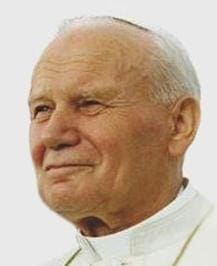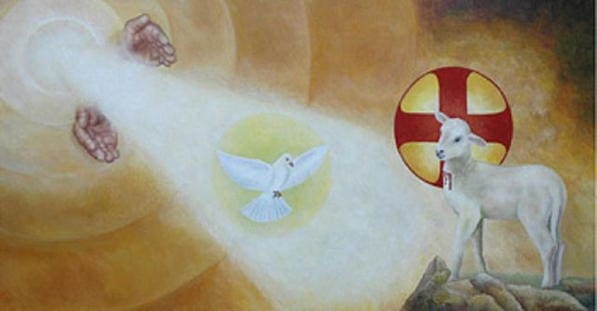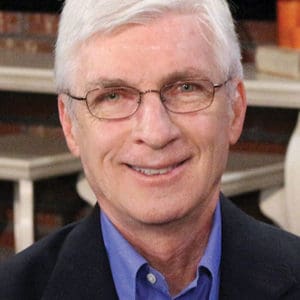Called to Holliness (Part I of II)
Jesus summed up His teaching in a startling and unambiguous call to His followers: “You, therefore, must be perfect, as your heavenly Father is perfect” (Mt. 5:48). Perfect in purity of heart, perfect in compassion and love, perfect in obedience, perfect in conformity to the will of the Father, perfect in holiness-when we hear these words, we can be understandably tempted to discouragement, thinking that perfection for us is impossible. And indeed, left to our own resources, it certainly is-just as impossible as it is for rich people to enter heaven, or for a man and a woman to remain faithful their whole lives in marriage. But with God, all things are possible, even our transformation.
 Pope John Paul II, in his prophetic interpretation of the events of the second half of the twentieth century and the beginning of the twenty-first, Novo Millennio Ineunte(NMI) points out that the Holy Spirit is again bringing to the forefront of the Church’s consciousness the conviction that these words of Jesus are indeed meant for every single one of us. He points out that the Jubilee of the year 2000 was simply the last phase of a period of preparation and renewal that had been going on for forty years, in order to equip the Church for the challenges of the new millennium.
Pope John Paul II, in his prophetic interpretation of the events of the second half of the twentieth century and the beginning of the twenty-first, Novo Millennio Ineunte(NMI) points out that the Holy Spirit is again bringing to the forefront of the Church’s consciousness the conviction that these words of Jesus are indeed meant for every single one of us. He points out that the Jubilee of the year 2000 was simply the last phase of a period of preparation and renewal that had been going on for forty years, in order to equip the Church for the challenges of the new millennium.
 The Holy Father speaks of three rediscoveries to which the Holy Spirit has led the Church, beginning with the Second Vatican Council, which concluded in 1965. One of these rediscoveries is the rediscovery of the “universal call to holiness”: “All the Christian faithful, of whatever state or rank, are called to the fullness of the Christian life and to the perfection of charity” (NMI, no. 30).
The Holy Father speaks of three rediscoveries to which the Holy Spirit has led the Church, beginning with the Second Vatican Council, which concluded in 1965. One of these rediscoveries is the rediscovery of the “universal call to holiness”: “All the Christian faithful, of whatever state or rank, are called to the fullness of the Christian life and to the perfection of charity” (NMI, no. 30).
He further emphasizes that this call to the fullness of holiness is an essential part of being a Christian:
To ask catechumens: “Do you wish to receive Baptism?” means at the same time to ask them: “Do you wish to become holy?” It means to set before them the radical nature of the Sermon on the Mount: “Be perfect as your heavenly Father is perfect” (Mt. 5:48). . . . The time has come to re-propose wholeheartedly to everyone this high standard of ordinary Christian living: the whole life of the Christian community and of Christian families must lead in this direction. (NMI, nos. 30-31)
Let’s take a look at what “holiness” really means. In the Book of Ephesians we read, “He chose us in him before the foundation of the world, that we should be holy and blameless before him” (Eph. 1:4). To be holy is not primarily a matter of how many Rosaries we say or how much Christian activity we’re engaged in; it’s a matter of having our heart transformed into a heart of love. It is a matter of fulfilling the great commandments which sum up the whole law and the prophets: to love God and our neighbor, wholeheartedly. Or as St. Teresa of Avila puts it, holiness is a matter of bringing our wills into union with God’s will.
St. Thérèse of Lisieux expresses it very similarly: “Perfection consists in doing His will, in being what He wills us to be.” As she said towards the very end of her life, “I do not desire to die more than to live; it is what He does that I love.”
In part II, we will examine what Blessed John Paul II specifically says about the call to holiness, training in holiness and why this turn to holiness of life and depth in prayer is important.
Editor’s Notes: This post originally appeared in Lay Witness Magazine, on May 1, 2006 in the May/June 2006 issue. Used with permission.
Ralph Martin is the author of a number of articles and books the most recent of which are The Urgency of the New Evangelization: Answering the Call (2013), as well as Will Many Be Saved? What Vatican II Actually Teaches and Its Implications for the New Evangelization (2012) and The Fulfillment of All Desire: A Guidebook for the Journey to God Based on the Wisdom of the Saints (2006).
Art: Pope John Paul II on 12 August 1993 in Denver (Colorado), Public Papers of the Presidents of the United States – Photographic Portfolio–1993 Vol. II http://www.access.gpo.gov/nara/pubpaps/1993portv2.html, PD-US; Santissima Trinità, 193×100 cm. del Polittico “Vergine di Caacupé”, Cargale-Vittorio Giardini, 2oo8, CCA; Wikimedia Commons.




